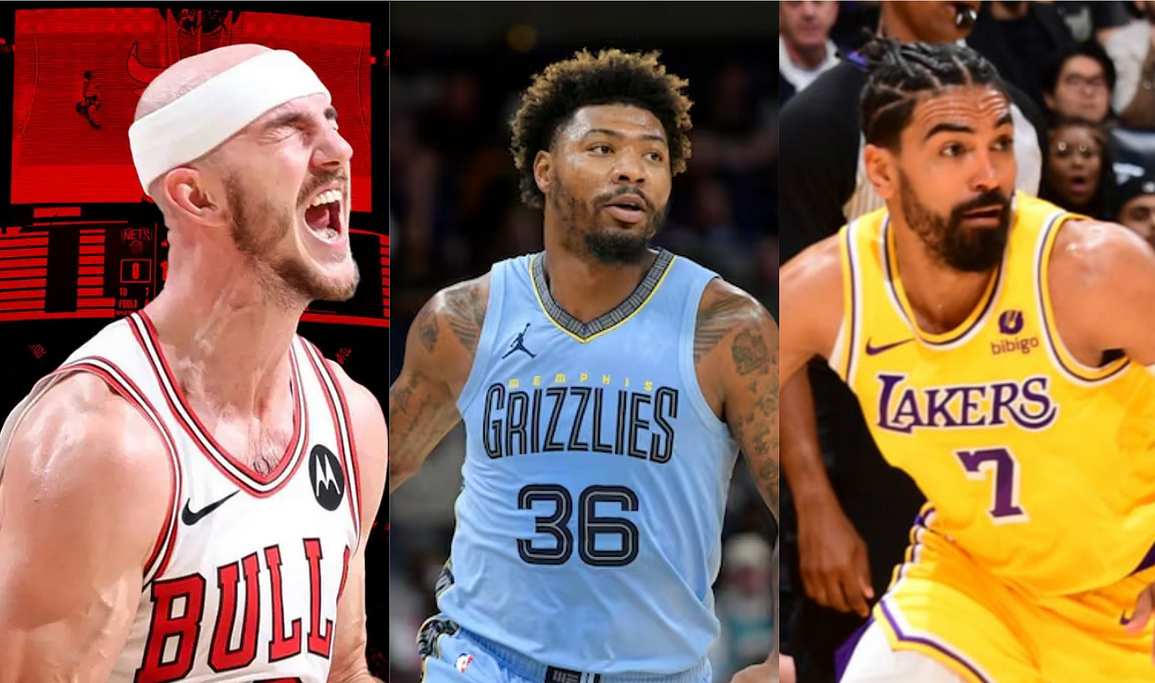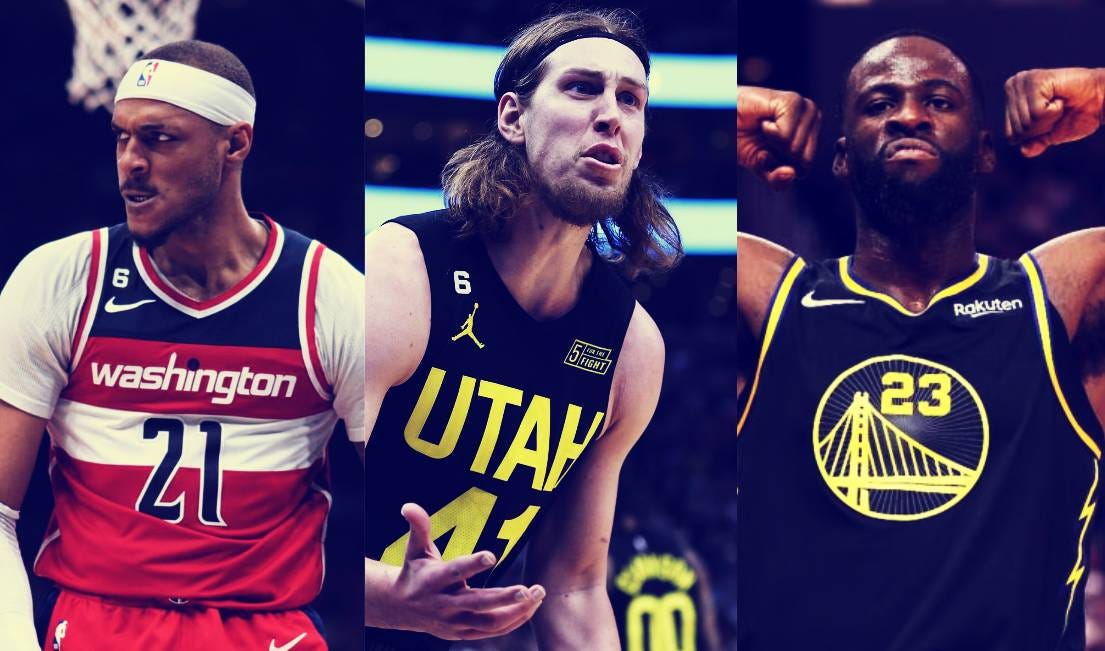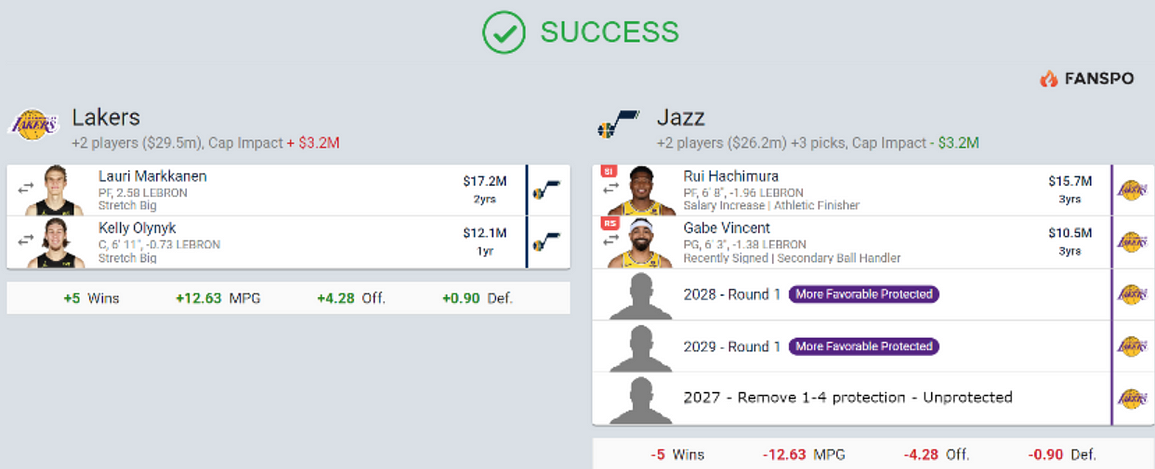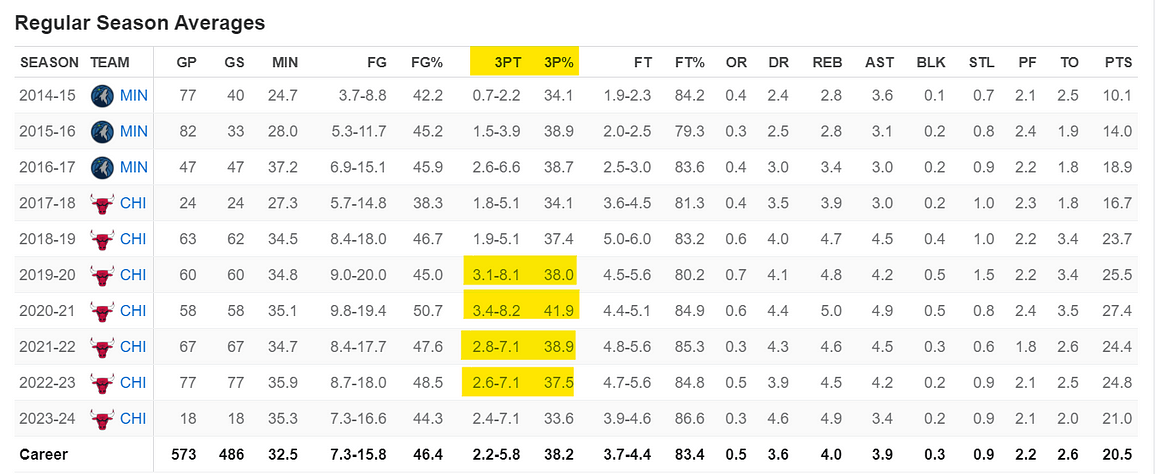Everything that had been right for the Lakers suddenly turned bad and the sunny optimism they could compete for an NBA championship without having to make a major trade has now been replaced with real concern.
The struggling Lakers have lost 3 of their last 4 games and face a daunting schedule for the rest of December where they could easily lose 5 of their 7 remaining games to end the year as a play-in team with a 17–17 record.
What a week ago looked like a Lakers team finally healthy and ready to start a long winning streak now suddenly looks like a flawed team that desperately needs a trade to upgrade starting lineup and backup center.

Over the next 2 weeks, the Lakers start with a 3-game road trip to Chicago, Minnesota, and Oklahoma City; followed by 2 games at home vs. Boston and Charlotte; and ending with Minnesota and New Orleans on the road.
Right now, it’s hard to imagine the Lakers beating the Timberwolves twice or the Thunder or Pelicans on the road, or Celtics at home. Then there are the two obvious trap games on the road against Chicago and Charlotte.
It’s not an understatement to say how the Lakers do over the next 7 games will likely determine how aggressive they are before the trade deadline. Right now, the Lakers are simply not a legitimate championship contender.
Anthony Davis Soars But Lakers Lose LeBron Minutes

The most surprising stats from the Los Angeles Lakers’ last 4 games has been how Anthony Davis has taken his game to a new level but suddenly for some reason the team could not win the usual LeBron James minutes.
What’s more worrisome is the Lakers’ recent 4-game slide has happened despite a historic performance from Anthony Davis where he averaged 35.3 points, 11.7 rebounds, 1.0 assists, 1.7 steals, and 1.3 blocks in 36.6 mpg.
Over the last 4 games, Anthony Davis shot 63.6% from the field, 66.7% from deep, and 72% from the line. He posted a team-best +1.1 net rating for the 4 games. Despite AD’s play, the Lakers were lucky not to lose all 4 games.
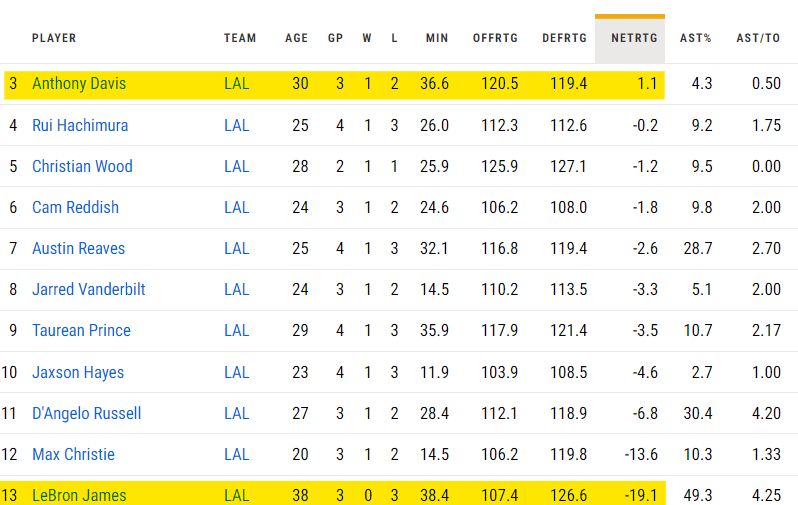
Statistically, the Lakers’ problem was LeBron, who posted a team-worst -19.1 net rating the last 4 games. That is extremely concerning considering LeBron’s age and mileage and the Lakers’ reliance on winning his minutes.
Over the last 4 games, LeBron averaged 27.0 points, 8.7 rebounds, and 11.3 assists with just 2.7 turnovers in 38.4 mpg. His 107.4 OffRtg was pedestrian but his 126.6 DefRtg was team second-worst after Christian Wood’s 127.1.
Bottom line, the Lakers have been in tailspin since winning the In League Tournament and the situation as reached urgent levels as the Lakers need LeBron James and the rest of the roster to play better if they want to win.
Time for Darvin Ham to Change Lakers’ Starting Lineup
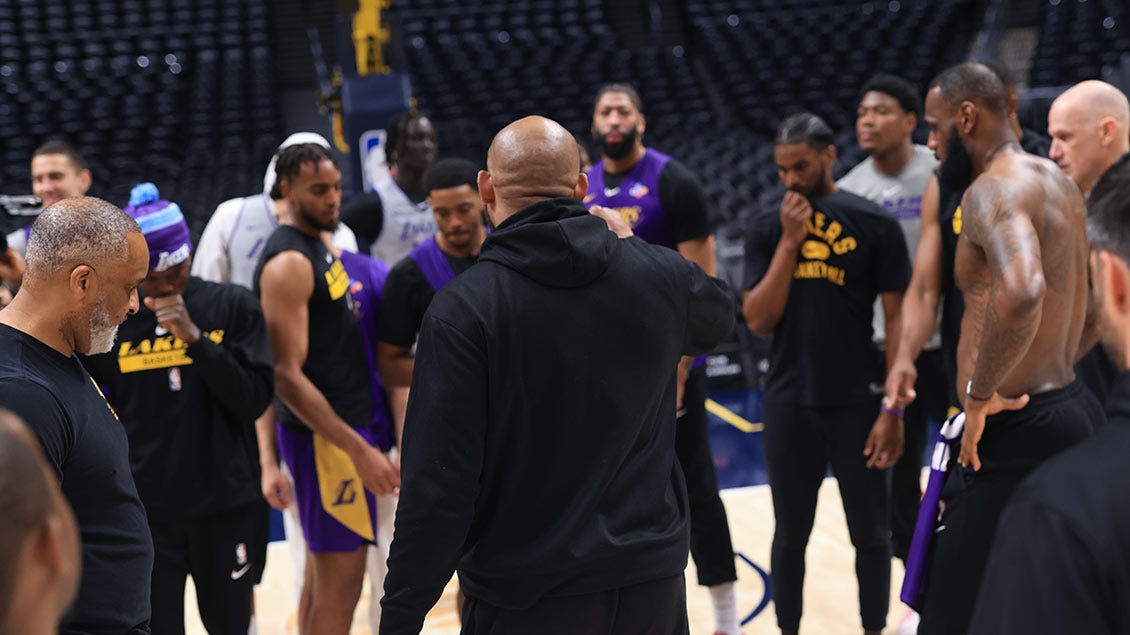
Darvin Ham has stuck with a starting lineup of D’Angelo Russell, Cam Reddish, Taurean Prince, LeBron James, and Anthony Davis. That lineup has started 12 games and played 132 minutes, most of any Lakers’ lineup.
Heading into what could be the most critical 7 games of this young season, the Lakers need to regroup and refocus their effort on playing with the energy and confidence that led them to win the In-Season Tournament. While the Lakers want to see how the addition of Gabe Vincent changes their rotations before actually making any trades, it will be interesting to see if Gabe’s presence could change who starts and plays point guard.
The Lakers need a starting lineup upgrade for D’Angelo Russell at point guard and Taurean Prince at small forward. Lakers need a defense-first 3&D point guard starter and a high-volume 3-point shooting wing starter.
Facing 7 challenging games to close out 2023, Darvin Ham should seriously consider replacing D’Angelo Russell with Gabe Vincent at point guard and replacing Taurean Prince with Rui Hachimura at small forward.
Hopefully, the quick road trip will give the Lakers players an opportunity to bond with each other and figure out how to turn this season around before it’s too late. The Lakers are unlikely to make any move until the deadline.
That means Ham and the Lakers are going to have to figure out what’s wrong with the Lakers using their current roster. They won’t be able to count in getting help from the trade market until after January 15th.
In the end, the Lakers need to survive the next 7 games. Losing 5 of the last 7 would mean the Lakers lost 8 of their last 11 games and would clearly signal that the Lakers were going to be major buyers at the trade deadline.
